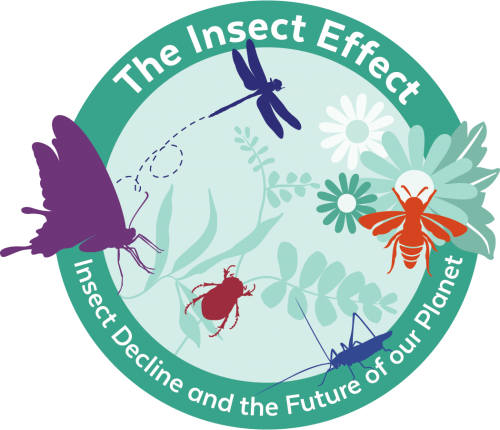Some Known Incorrect Statements About Eco Bed Bug Exterminators Dc
The smart Trick of Eco Bed Bug Exterminators Dc That Nobody is Discussing
Table of Contents7 Easy Facts About Eco Bed Bug Exterminators Dc ShownThe Basic Principles Of Eco Bed Bug Exterminators Dc Some Known Factual Statements About Eco Bed Bug Exterminators Dc Not known Incorrect Statements About Eco Bed Bug Exterminators Dc Eco Bed Bug Exterminators Dc - An Overview
Because pesticides are hazardous, they are additionally possibly hazardous to humans, pets, other organisms, and the atmosphere. Consequently, individuals that use pesticides or on a regular basis been available in call with them need to understand the relative poisoning, prospective health and wellness impacts, and preventative procedures to minimize exposure to the products they use. Risk, or risk, of using chemicals is the potential for injury, or the level of danger entailed in utilizing a pesticide under a given collection of conditions.
However, applicators can decrease or almost get rid of exposure-- and hence minimize danger-- by following the tag directions, making use of personal safety clothing and equipment (PPE), and managing the pesticide correctly. Even more than 95 percent of all pesticide direct exposures come from dermal direct exposure, mainly to the hands and forearms. By wearing a pair of unlined, chemical-resistant gloves, this kind of exposure can be almost gotten rid of.
The unsafe effects that happen from a solitary exposure by any type of course of entrance are called "intense impacts." The four paths of exposure are facial (skin), inhalation (lungs), oral (mouth), and the eyes. Intense toxicity is figured out by examining the facial poisoning, inhalation toxicity, and oral poisoning of guinea pig.
Eco Bed Bug Exterminators Dc Things To Know Before You Buy
Intense toxicity is gauged as the quantity or focus of a toxicant-- the a.i.-- called for to eliminate 50 percent of the pets in a test population. This procedure is normally shared as the LD50 (lethal dosage 50) or the LC50 (dangerous focus 50). Furthermore, the LD50 and LC50 values are based on a single dosage and are videotaped in milligrams of chemical per kilogram of body weight (mg/kg) of the guinea pig or partially per million (ppm).
The lower the LD50 or LC50 worth of a pesticide product, the higher its poisoning to humans and pets. Chemicals with a high LD50 are the least toxic to humans if utilized according to the directions on the product tag. The chronic toxicity of a chemical is identified by subjecting guinea pig to long-lasting direct exposure to the active component.
The persistent poisoning of a chemical is much more difficult than intense poisoning to determine with laboratory evaluation. Products are categorized on the basis of their family member severe toxicity (their LD50 or LC50 values). Pesticides that are classified as very toxic (Poisoning Group I) on the basis of either dental, dermal, or breathing toxicity have to have the signal words risk and toxin printed in red with a head and crossbones icon prominently displayed on the front panel of the plan label.
The acute (solitary dosage) dental LD50 for pesticide items in this team ranges from a trace total up to 50 mg/kg. For example, exposure of a couple of decreases of a material taken by mouth might be deadly to a 150-pound individual. Some pesticide products have simply the signal word risk, which informs you absolutely nothing concerning the severe toxicity, simply that the product can create serious eye damages or serious skin inflammation
All About Eco Bed Bug Exterminators Dc
In this group, the acute dental LD50 arrays from 50 to 500 mg/kg. A tsp to an ounce of this material might be fatal to a 150-pound person (exterminator). Chemical products classified as either slightly hazardous or fairly safe (Poisoning Classifications III and IV) are needed to have the signal word care on the pesticide label

All pesticide toxicity chemical, worths the LD50, can be found on discovered product's Material Safety Product Sheet InformationMSDS). Pesticide labels and MSDS can be obtained from merchants or manufactures - https://linktr.ee/ecobedbug3xt. The signs and symptoms of chemical poisoning can range from a mild skin irritability to coma or even fatality.
People additionally vary in their sensitivity to different levels of these chemicals. Some individuals may show no reaction to an exposure that might trigger extreme illness in others (how to get rid of bed bugs). As a result of prospective health and wellness concerns, chemical customers and handlers must identify the typical signs and signs and symptoms of chemical poisoning. The results, or symptoms, of chemical poisoning can be generally defined as either topical or systemic.
4 Easy Facts About Eco Bed Bug Exterminators Dc Explained
Dermatitis, or swelling of the skin, is accepted as the most generally reported topical result associated with chemical direct exposure. Some individuals have a tendency to cough, wheeze, or sneeze when subjected to pesticide sprays.
This sign typically subsides within a few minutes after an individual is gotten rid of from the direct exposure to the irritant. Nevertheless, a here reaction to a pesticide item that creates a person not only to sneeze and cough but additionally to create serious acute respiratory symptoms is more probable to be a true hypersensitivity or allergy.
Systemic effects are fairly different from topical effects. They typically occur far from the original factor of get in touch with as a result of the pesticide being soaked up into and distributed throughout the body. Systemic impacts frequently consist of queasiness, throwing up, tiredness, headache, and digestive tract conditions. In sophisticated poisoning cases, the individual may experience changes in heart price, difficulty breathing, convulsions, and coma, which might lead to fatality.